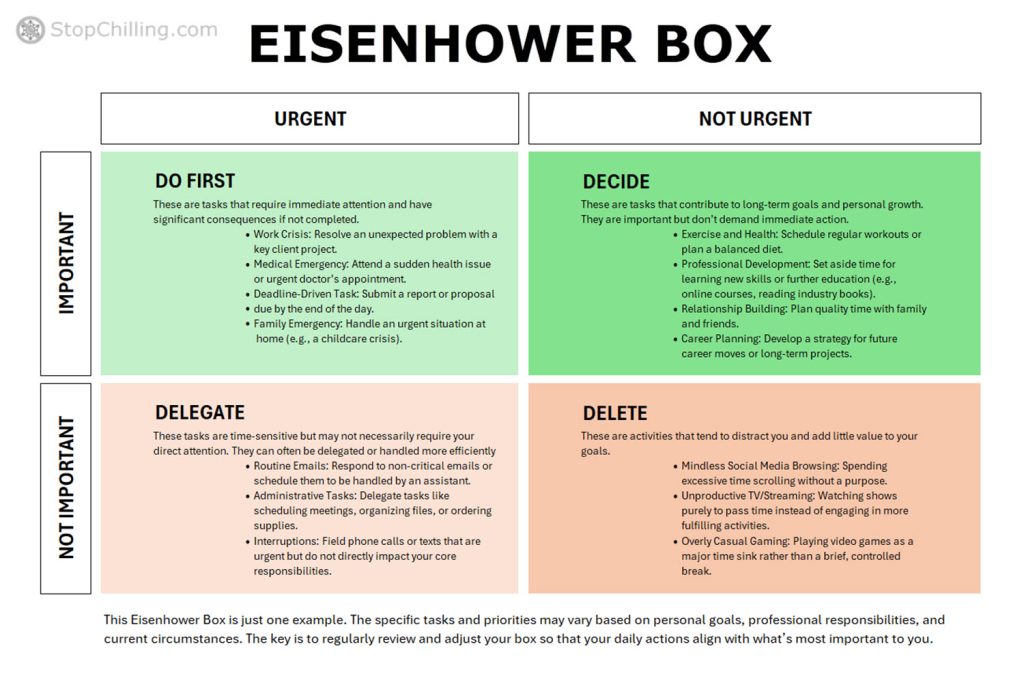In the high-stakes world of tech innovation, even industry giants like Elon Musk face the formidable challenge of time management. One particularly intense period in Musk’s career was during the production ramp-up of the Tesla Model 3 in 2017. There was mounting pressure to deliver on ambitious promises. So Musk found himself ensnared in what he described as “production hell.” The project was plagued by delays, and Tesla’s future seemed uncertain. Musk, known for his relentless work ethic, was working around the clock. He was even sleeping on the factory floor to save time. Yet, despite immense effort, there was still an urgent need to optimize his use of time to ensure the project’s success.
Musk faced the risk of unmet deadlines and soaring stress levels. So, he turned to a series of strategic time management techniques to regain control. He began by meticulously prioritizing tasks, focusing on high-impact activities that would drive the project forward. Musk also implemented a time-blocking strategy, dedicating specific hours to critical engineering issues, thereby minimizing distractions and ensuring concentrated effort on solving the most pressing problems. Furthermore, as proposed in the book, The Time Management Solution: 21 Proven Tactics To Increase Your Productivity, Reduce Your Stress, And Improve Your Work-Life Balance!, by Damon Zahariades, Musk streamlined communication channels, reducing unnecessary meetings and encouraging direct, effective communication across teams. This approach not only improved efficiency but also empowered team members to take ownership of their tasks, fostering a culture of accountability.
Musk Works Things Out
Through disciplined time management strategies, Musk was able to steer the Model 3 project back on track. By the end of 2018, Tesla had overcome its production challenges, significantly boosting its output and cementing its reputation as a leader in the electric vehicle industry. Musk’s experience during this period is a testament to the power of effective time management, demonstrating that even the most daunting challenges can be navigated successfully with the right techniques and mindset. This story underscores the importance of mastering time management for achieving success, both in business and in life. Time-management is a learned skill. And Musk has repeatedly stated that he learned much of what he knows from reading. Therefore, we can be sure that various time management books have found their way onto his reading list over the years. And below are some techniques we can apply to get the most out our time.
The Pomodoro Technique: Tomato, Tomatoe, Let’s Get Things Done
First on the docket is the Pomodoro Technique. No, this isn’t about cooking pasta sauce, though if that’s your procrastination of choice, you’re not alone. The Pomodoro Technique involves breaking down work into 25-minute intervals, separated by short breaks. It’s like sprinting with a promise of a cookie at the end. Additionally, the Pomodoro technique can be used to reduce procrastination. See how here.
Eisenhower Box: The Two-by-Two Matrix of Power
Next, we have the Eisenhower Box, named after President Dwight D. Eisenhower, who juggle-managed the D-Day invasion and a presidency without the help of Google Calendar. The Eisenhower Box helps you prioritize tasks by urgency and importance. Picture a tic-tac-toe board where the prize is not three in a row, but rather a sense of clarity and purpose. Franklin might have used this method while deciding between flying kites in storms and writing Poor Richard’s Almanack, though rumor has it, he just flipped a coin. Author, James Clear, gives an excellent description of how use this time management technique in his book, Atomic Habits.

The 2-Minute Rule: Because Procrastination is a Dish Best Not Served
The 2-Minute Rule is an ode to those quick wins. If a task takes two minutes or less, do it immediately. It’s as simple as that! This rule is especially handy for those of us who would rather alphabetize our spice racks than tackle our inboxes. Imagine Franklin, quill in hand, pondering whether to discover electricity or take out the trash. If only the rule existed back then, who knows how many more inventions he might have graced us with.
Time Blocking: A Calendar’s Best Friend
Benjamin Franklin is often celebrated for his disciplined approach to daily life, and his method of structuring his day bears a strong resemblance to what modern books on time management now call time blocking. While he didn’t use the term “time blocking,” he did design a detailed schedule that allocated specific blocks of time to various activities, reflecting a similar philosophy.
Daily Schedule
Franklin divided his day into sections for work, reflection, reading, and other pursuits. He famously structured his morning with the question, “What good shall I do this day?” and ended it by asking, “What good have I done today?” This routine helped him focus on purposeful activities throughout the day.
Prioritization of Tasks
His method involved prioritizing important tasks and setting aside dedicated time for self-improvement and reflection—principles that align closely with modern time management strategies like time blocking.
In summary, while Benjamin Franklin didn’t label his practice as “time blocking,” his systematic approach to planning and dividing his day into focused periods is a clear early example of the technique.

The Rule of Three: Simplifying the Chaos
Lastly, let’s talk about the Rule of Three, a technique as simple as a tri-cornered hat. Each day, identify three main tasks to focus on. It’s like a to-do list that’s been on a diet. Franklin’s version might have looked something like this: 1. Avoid kite-related injuries. 2. Annoy the French with superior wit. 3. Dabble in diplomacy.
Conclusion: Crafting Your Own Time Masterpiece
And so, dear reader, as we conclude our time-traveling escapade with Mr. Franklin, remember that, as many books on time management will attest, it isn’t about achieving perfection. Instead, it’s about finding what works for you—whether it’s a tomato timer, a prioritized inbox, or simply the courage to tackle that two-minute task.
If you would like to improve your time management skills, try to adopt 2 of the techniques outlined above today and see what a difference they make. Pick the 2 that appeal to you the most and see if you can apply them daily for a week. Then notice the improvements you experience in productivity.


Leave a Reply
You must be logged in to post a comment.